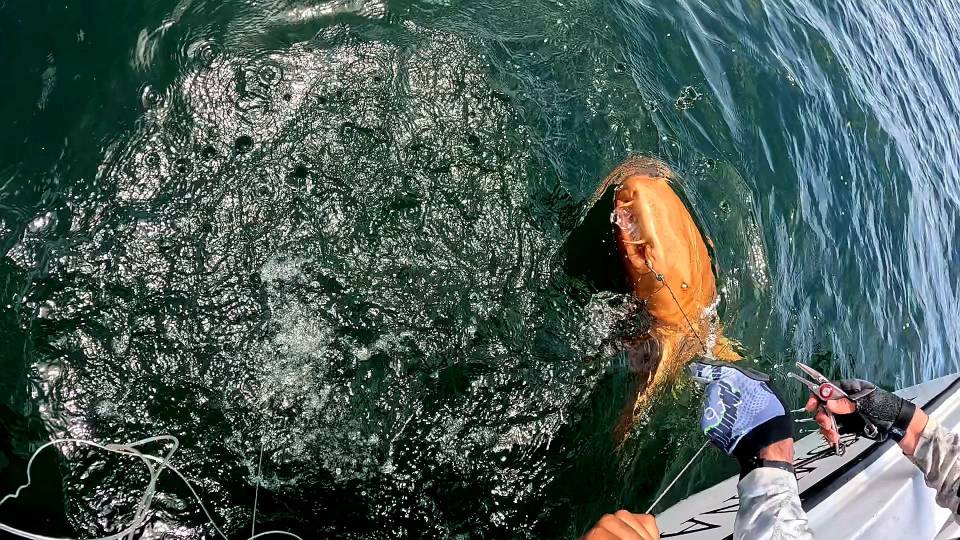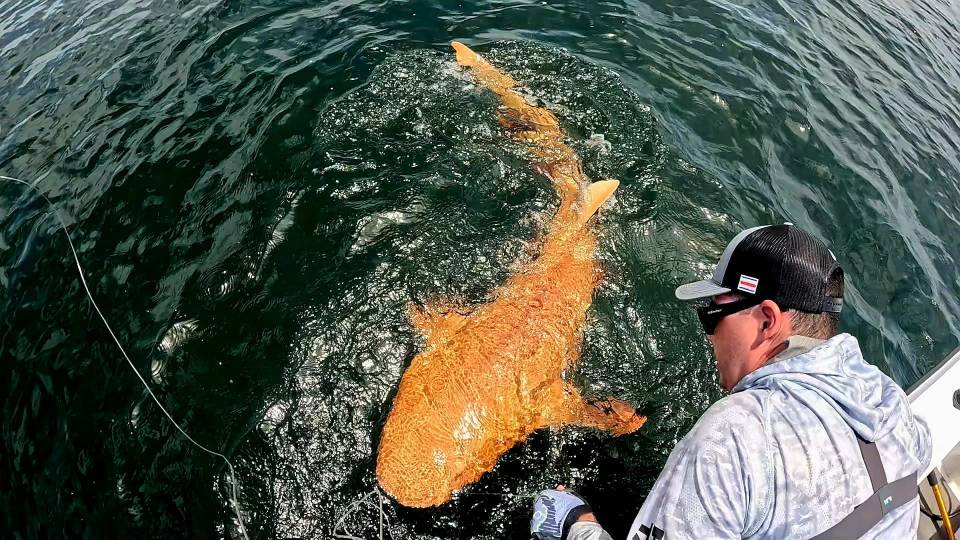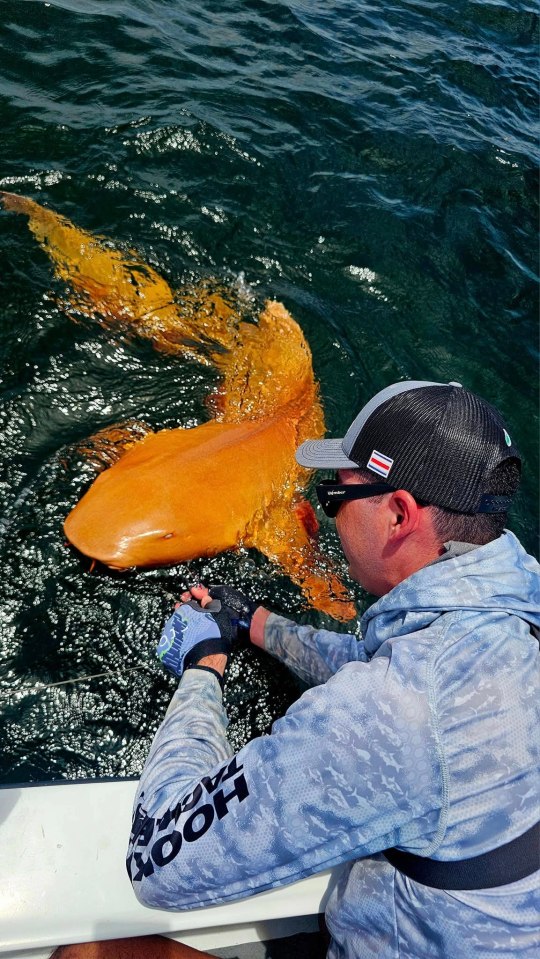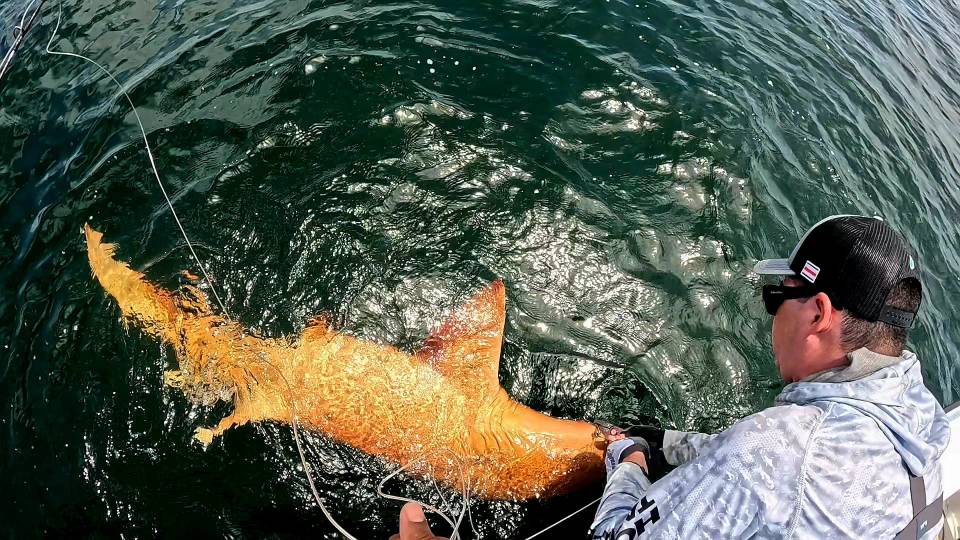A GIANT first-of-its-kind shark has been reeled in off the coast of Costa Rica.
The exceedingly rare shark, measuring in at over six feet long, exhibited a rare pigmentation condition causing it to appear orange.
The shark was thought to have xanthism, a rare pigmentation condition, affecting the fur, scales or skin of animals.
It creates yellow or golden colours in the animal but has never been observed in cartilaginous fish, a group that includes sharks, rays, and skates, in the Caribbean before.
The rare catch appeared to also show traits of albinism, with the shark boasting a pair of striking white eyes.
The nurse shark usually has brown skin which helps them blend into the seabed.
Based on the size of the shark researchers from the Federal University of Rio Grande concluded the unusual colour did not affect the shark’s survival.
Animals with albinism or xanthism are much more visible which scientists believe lowers their survival rate in the wild.
The bright colouring caused by the pigmentation conditions makes affected animals easy targets for predators.
Both conditions can also increase sensitivity to sunlight and make it difficult for animals to find mates.
This makes the discovery of a shark that survived to adulthood with both conditions all the more significant.
It is unclear whether the unusual colouring offered any advantages to the shark or if it simply managed to thrive despite being more visible.
The striking fish was reeled in by some pals on a sport fishing trip in the Caribbean.
Its discovery prompted questions for marine biologists about genetic diversity in Caribbean nurse shark populations.
Scientists are now asking whether this is a one-time occurrence, or if it could signal a new genetic trend in the local population.
Xanthism is considered extremely rare across the animal kingdom.
It has been recorded in only a few species of fish, reptiles, and birds, but there have only been a handful of confirmed cases.
In freshwater fish such as guppies, cichlids, and even goldfish, the condition sometimes produces striking yellow morphs.
Certain birds, like parrots and canaries, have also displayed golden plumage linked to xanthism.
Occasional reports in reptiles describe unusually yellow snakes or lizards.
What is xanthism
Xanthism, also known as xanthochroism, is a condition where an animal exhibits an unusually yellow coloration, often due to a lack of normal red pigmentation that is replaced by yellow.
This condition is typically caused by genetic mutations but can also be influenced by diet.
Xanthism is often observed as a deviation from the typical coloration pattern of a species, where red or other pigments are replaced by yellow.
The opposite of xanthochromism, a deficiency in or complete absence of yellow pigment, is known as axanthism.
















